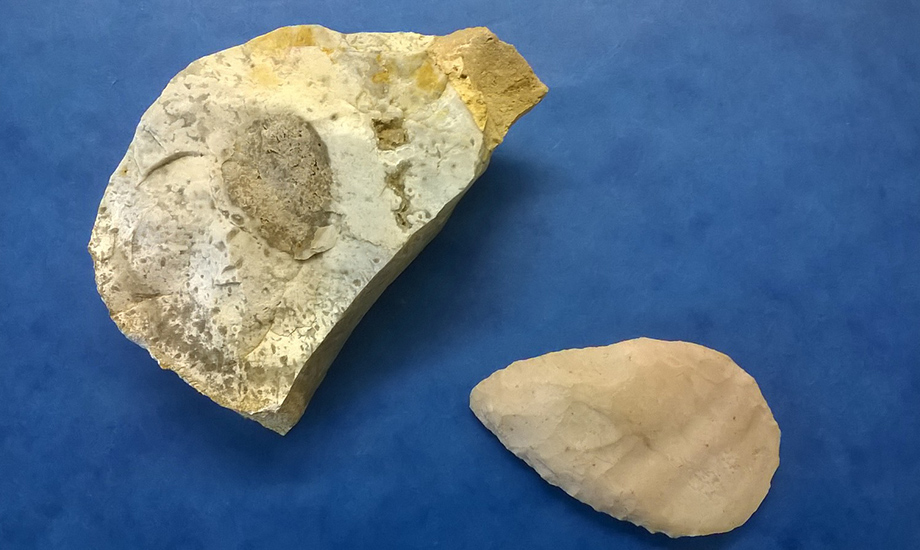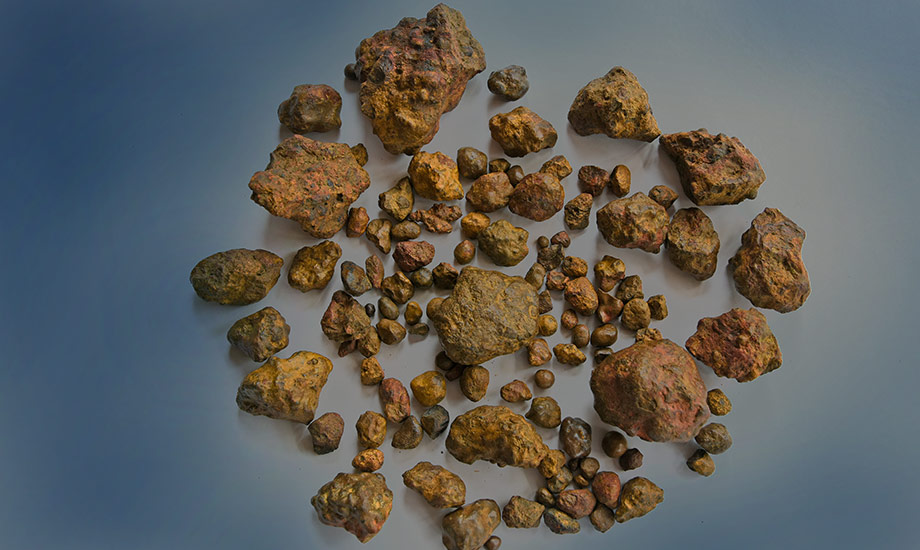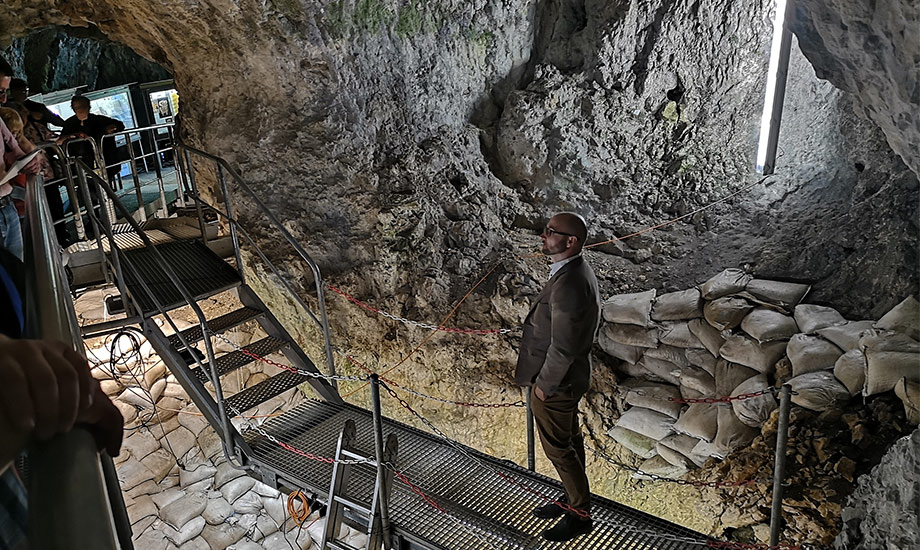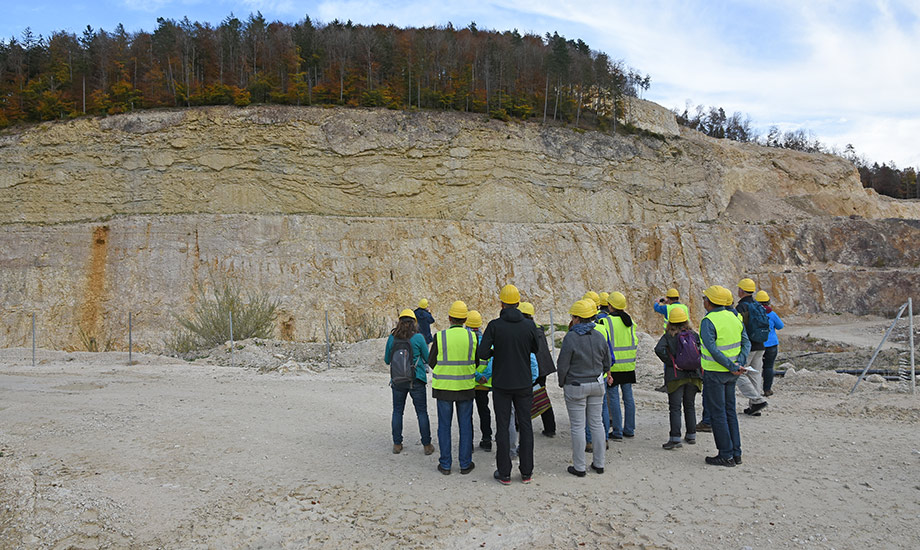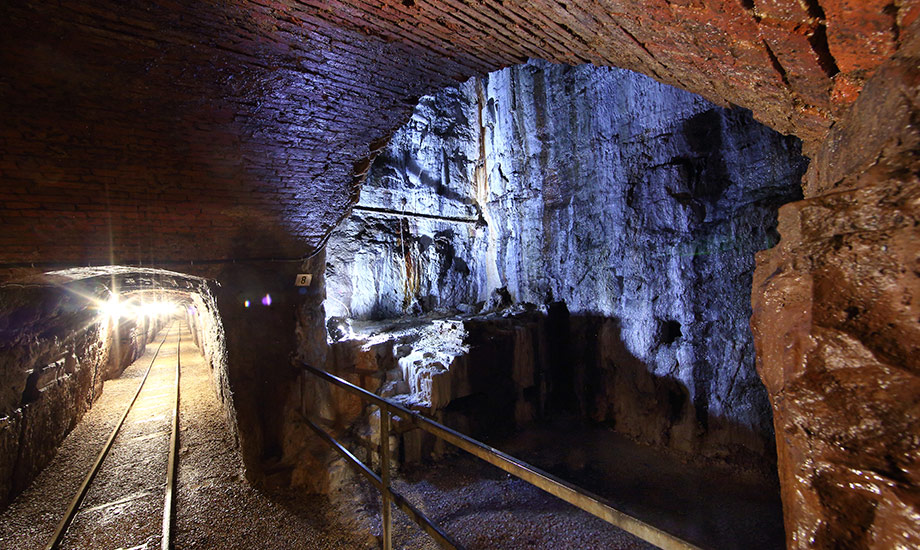The stone treasures of the Alb and their exploitation
Since the Palaeolithic Age, the special geology of the Swabian Alb has provided people with important raw materials in order to survive. As the term "Stone Age" already suggests, the naturally occurring rock in the region was available as material for their tools.
An exceptional raw material from the Swabian Alb is Jurassic chert. Due to its great hardness and its ability to form extremely sharp edges when struck, it was ideal for making blades. This made it the "steel of the Stone Age". It is found in limestone or as bright nodular deposits due to weathering. Often parts of sponges can still be seen in the pebbly material. Jurrasic chert formed when changes in the chemical milieu of the limestone mud, e.g. in connection with the decomposition of organic material, caused dissolved silicic acid to precipitate from the seawater. It accumulated in the form of microcrystalline quartz, forming silicified areas that remained in the limestone.
The Swabian Alb offers two raw materials for iron smelting. Their use can be traced back to Celtic times and laid the foundation for the iron industry on the Alb.
The so-called Bohnerz dates back to the Neogene/Paleogene period around 56 million years ago, when the Alb was mainland. During the tropical weathering of Jurassic limestones, the insoluble residues such as clay minerals or iron oxide accumulated. They formed the striking spherical or nodular concretions that can reach several centimetres in size. On the Alb, you can often still find historical mining pits, so-called "pingen". Another source of iron ore are the iron sandstones from the Middle Jurassic. In the eastern Alb, this rock was mined underground until 1939. The former "Tiefe Stollen" gallery near Aalen is now open as a visitor mine. By the way: the name "Brown Jurassic" for the Middle Jurassic deposits can be traced back to the high content of reddish-brown and yellowish iron minerals.
A characteristic building stone of the Alb is the porous lime tufa that gives many Swabian railway stations its typical look. The material is easy to process and very durable. Lime tufa forms when lime dissolved in water is precipitated at springs or waterfalls. This happens through CO2 extraction or temperature increase. Over thousands of years, mighty layers formed. It is the youngest rock in the Alb and still forms at some places They are protected as a habitat for rare species. Today, lime tufa is no longer mined.
Quarries can still be found frequently in the Swabian Alb. Limestone and marl are quarried there for use in the cement industry or as gravel. The high-purity massive limestone is less common and consists of up to 99 percent pure calcium carbonate. It is used in the food industry, pharmaceutical industry and paper production.
